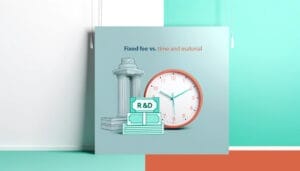Many architects are either unaware of the applicability of research and development (R&D) tax credits to their firms or struggle to understand how the credit applies if their projects or project activities qualify for R&D Tax Credits, why they qualify, and how much the credit might be.

R&D Tax Credit Background
The R&D tax credit (formerly the Economic Recovery Act) was adopted in 1981. Since its inception it has been extended 15 times and has been expanded in its definition and application. In 2004 a revision to the code (IRS Code Section 41c) included a “Four-Part Test” to help define qualifying activities, costs, and industries.
The Four Part Test
The Four-Part Test summarizes qualifications as:
- An activity that creates a new or improved business component of function, performance, reliability, or quality;
- Technological in nature and related to physical or biological science, engineering, or computer science;
- Intended to discover information to eliminate uncertainty in capability, method, or design;
- An activity that includes a process of experimentation, or evaluating one or more alternatives to achieve a result. This might include modeling, simulation, or systematic trial-and-error.
Many Architects struggle to understand how these apply to their daily design and project tasks, or why the IRS allows a tax credit to help fund some of their overhead costs. This credit is an incentive to businesses that invest in innovation and aim to increase technological advancements within the U.S. It also incentivizes businesses that increase these activities each year.
The R&D credit is an income tax offset based on a company’s allowable wage or supply costs (qualifying supply costs are not usually found in typical architectural firms). Eligible wage costs will be hours spent working on activities that fall under the definitions above. These usually occur during the first three to four phases of architectural design: conceptual design, schematic design, design development, and sometimes into the construction document phases.
Architectural Design
Examples of qualifying activities include:
- alternative design concepts;
- use of unique materials in construction for structural or energy efficiency reasons;
- testing to determine acoustical, lighting, and visual features (e.g., movie theaters, auditoriums);
- technical factors and materials for sanitary or safety uses (e.g., medical treatment centers, hospitals, food preparation or food manufacturing facilities).
What Activities Doesn't Qualify for Architects?
Activities that do not qualify as research activities include funded research or contracts which guarantee payment for 100% of all time and materials, regardless of the outcome or time incurred. Also, prototype projects with little to no innovation or unique design components have little qualifying time associated with the credit.
How Can An Architect Qualify for the R&D Tax Credits?
The R&D tax credit is a complex calculation of eligible costs averaged out over prior years and calculated as an increase in expenses over those prior year costs. Starting at 20% of increased costs each year, the credit generally averages out as a 5%–6% net federal credit. In 2018, according to the biannual AIA Firm Survey, 28% of architecture firms with over 50 employees applied and received tax credits.
An example of the calculation: A company with $100,000 in qualified research wages might qualify for a $5,000–$6,000 federal credit. A credit will directly offset income tax due, which results in either a refund or reduction in taxes owed. Currently, 42 states recognize R&D activity and provide state credits similar to the federal credits, which can significantly increase the benefit of an R&D credit analysis.
When and How Often Can Your Claim R&D Tax Credits?
R&D tax credits can be claimed each year. For firms that have never claimed the credit, there may also be credits available for the prior three years . If your company meets the standards outlined above, a discussion with an R&D expert may be worthwhile.



